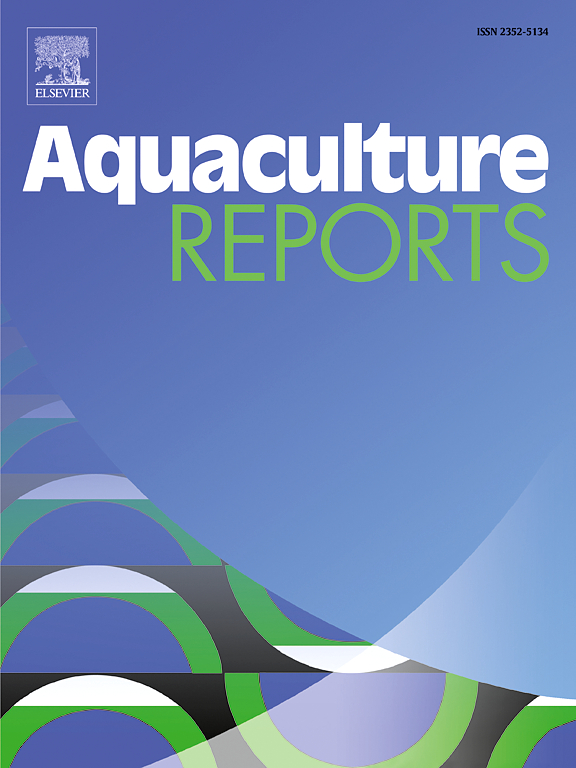In vitro evaluation of the antibacterial effects of monomer components of Pithecellobium clypearia against aquatic pathogens and synergy with enrofloxacin
IF 3.2
2区 农林科学
Q1 FISHERIES
引用次数: 0
Abstract
Traditional Chinese medicine (TCM), renowned for environmentally friendly and natural characteristics, has emerged as a promising alternative to conventional antibiotics. This study evaluated the antibacterial efficacy of six TCM-derived monomers (quercetin, luteolin, pyrogallol, gallic acid, tannic acid, and L-epicatechin) from Pithecellobium clypearia against 11 stains of aquatic pathogens, including a drug-resistant Aeromonas schubertii strains. Employing the Oxford cup diffusion and micro broth dilution methods, we discovered these components demonstrated varying degrees of antibacterial activity against the tested pathogens. Pyrogallol, luteolin and tannic acid exhibiting particularly remarkable performance. with pyrogallol exhibiting an impressive minimum inhibitory concentration (MIC) of just 15.63 µg/mL, and luteolin and tannic acid ranged from 62.50 to 500 µg/mL. These compounds demonstrate greater efficacy against the multi-drug resistant Aeromonas schubertii strain WL23R compared to the sensitive A. schubertii strain WL23S, indicating their potential in combating antibiotic resistance. Additionally, the combination of pyrogallol, luteolin, and tannic synergy with enrofloxacin (ENR) enhanced the potency of existing antimicrobials and potentially reducing dosage needs. These results provided evidence that the six monomers, particularly pyrogallol, luteolin, and tannic acid, exhibited substantial antibacterial properties with potential applications as antibiotic alternatives in aquaculture.
求助全文
约1分钟内获得全文
求助全文
来源期刊

Aquaculture Reports
Agricultural and Biological Sciences-Animal Science and Zoology
CiteScore
5.90
自引率
8.10%
发文量
469
审稿时长
77 days
期刊介绍:
Aquaculture Reports will publish original research papers and reviews documenting outstanding science with a regional context and focus, answering the need for high quality information on novel species, systems and regions in emerging areas of aquaculture research and development, such as integrated multi-trophic aquaculture, urban aquaculture, ornamental, unfed aquaculture, offshore aquaculture and others. Papers having industry research as priority and encompassing product development research or current industry practice are encouraged.
 求助内容:
求助内容: 应助结果提醒方式:
应助结果提醒方式:


